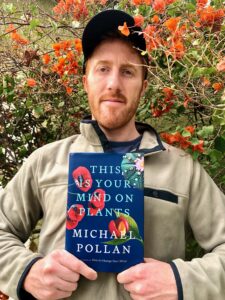 There are two types of ‘drugs’ that exist: those that are natural and come from plants and those that are unnatural and are made in a laboratory. Somehow, in what seems like an inverse of how things should be, modern society has outlawed the natural ones while accepting and distributing the unnatural ones. Why is this the case and how did we get here? In his book, Pollan does some research into three of the natural ones: opium, mescaline, and caffeine, and how society has come to treat each.
There are two types of ‘drugs’ that exist: those that are natural and come from plants and those that are unnatural and are made in a laboratory. Somehow, in what seems like an inverse of how things should be, modern society has outlawed the natural ones while accepting and distributing the unnatural ones. Why is this the case and how did we get here? In his book, Pollan does some research into three of the natural ones: opium, mescaline, and caffeine, and how society has come to treat each.
Opium comes from the opium poppy plant, scientifically labeled papaver somniferum. On the one hand, this plant is illegal to grow. On the other hand, it grows wildly (and domestically) all over North America, and most people have no idea what it harbors. You can find it in gardens across the world simply for its beauty and richness. Part of the reason why the plant is illegal to grow and yet barely regulated at all is that making opium from it is a time consuming process. Most people simply don’t have the patience (or knowledge) to cultivate the plant, slit the seed pods, harvest the ooze from inside, and distill it into an ingestible format. If you’re looking to get high on opium, you don’t spend months growing it in your garden; you buy it from the guy on the street corner.
Mescaline is in a similar boat to opium, in that it is illegal to grow (most often via the peyote cactus), and yet nobody is really keeping an eye out for it. Mescaline is a psychedelic drug, often inducing hallucinations, and differs from opium in several ways—in his book Pollan reviews these plants mostly through a social and political lens, not how they actually affected him when he ingested them. Via this lens, in the United States for example, only Native American’s are permitted by law to grow peyote due to their cultural history of its usage. It is likewise a federal crime for a non-Native person to possess it, grow it, transport it, buy it, sell it, or ingest it. “According to many Native Americans, [this] is exactly as it should be,’ our author notes. “Given the importance of peyote to Native Americans today, and the shortages of the cactus, surely they have a point.”
This brings us to the case of caffeine, most often consumed in the form of coffee and tea. Caffeine is the most widely distributed ‘drug’ in the world and is consumed by everybody, regardless of class, race, income, or location. It is grown everywhere, shipped everywhere, and consumed everywhere. There is no doubt that caffeine effects the mental processes of the brain, as it is a stimulant and the most popular option when trying to fight off feelings of fatigue. Caffeine is legal everywhere, even given to children—most often in the form of soda.
Having considered these three distinct plants, an obvious question arrises: Why are some outlawed and some not? “Is it the quality of addictiveness that renders a substance illicit? Not in the case of tobacco, which I am free to grow in this garden. Curiously, the current campaign against tobacco dwells less on cigarettes’ addictiveness than on their threat to our health. So is it toxicity that renders a substance a public menace? Well, my garden is full of plants—datura and euphorbia, castor beans, and even the leaves of my rhubarb—that would sicken and possibility kill me if I ingested them, but the government trusts me to be careful. Is it, then, the prospect of pleasure—of ‘recreational use’—that puts a substance beyond the pale? Not in the case of alcohol: I can legally produce wine or hard cider or beer from my garden for my personal use (though there are regulations governing its distribution to others). So could it be a drug’s ‘mind-altering’ properties that make it evil? Certainly not in the case of Prozac, a drug that, much like opium, mimics chemical compounds manufactured in the brain.”
If I want to make a quart of hard apple cider in my garden to get drunk, the government has no issue. If I want to brew a cup of poppy tea for a headache, however, I could go to prison for years. It was relatively recent in the United States that these rules were reversed. So, why are some plants illegal and others perfectly permissible? Because the government doesn’t trust the people to use these ‘drugs’ responsibly. They would instead prefer to exert their will and structure the rules of society to their liking. The answer to this question is the same answer to the question of why plants that produce marijuana, cocaine, psilocybin, and all the other mind-altering substances are also outlawed: People in power want(ed) it that way. This is why prozac, morphine, and codeine are pharmacologically available: they are ‘controlled.’ “Societies condone the mind-changing drugs that help uphold society’s rule and ban the ones that are seen to undermine it.” And by society, of course, our author means those with the power to shape it.


Leave a Reply